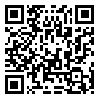Volume 20, Issue 7 (10-2021)
JRUMS 2021, 20(7): 817-834 |
Back to browse issues page
Download citation:
BibTeX | RIS | EndNote | Medlars | ProCite | Reference Manager | RefWorks
Send citation to:



BibTeX | RIS | EndNote | Medlars | ProCite | Reference Manager | RefWorks
Send citation to:
Ghaffarian Bahraman A, Taherifard A R, Rezaeian M. Status of Lead in Iranian Mothers' Milk: A Systematic Review. JRUMS 2021; 20 (7) :817-834
URL: http://journal.rums.ac.ir/article-1-5964-en.html
URL: http://journal.rums.ac.ir/article-1-5964-en.html
Rafsanjan University of Medical Sciences
Abstract: (1774 Views)
Background and Objectives: Although breast milk is a complete food for the newborn development, it can also be an important route for the exposure to lead. Therefore, the aim of this systematic review was to explore the status of lead in Iranian mothers’ milk, and also to identify its affecting factors.
Materials and Methods: In the present systematic review, the databases including PubMed, Science Direct, Google Scholar, Scientific Information Database (SID), Iran Medex, and Magiran were searched to find the relevant articles upto 2020. After completing the search, the articles were evaluated according to a pre-prepared checklist.
Results: A total of 10 studies were included in our study according to the inclusion and exclusion criteria. The highest mean of lead concentration in milk was related to mothers living in Hamadan and Tehran provinces, while the lowest was related to Kordestan province. Among the factors studied, maternal age, parity, employment, and the use of lipstick were significantly related to concentration of lead in breast milk.
Conclusion: It seems that increasing health care to reduce the exposure of pregnant and lactating mothers to lead should be seriously pursued by health policy-makers. It is also necessary to conduct more extensive studies to clarify the situation of infants exposed to lead through breast milk in the other areas of the country.
Key words: Lead, Toxic metals, Breast milk, Iran
Funding: This study did not have any funds.
Conflict of interest: None declared.
Ethical approval: Not applicable.
How to cite this article: Ghaffarian Bahraman A, Taherifard AR, Rezaeian M. Status of Lead in Iranian Mothers' Milk: A Systematic Review. J Rafsanjan Univ Med Sci 2021; 20 (7): 817-34. [Farsi]
Type of Study: Review Article |
Subject:
Environmental Health
Received: 2021/04/26 | Accepted: 2021/06/14 | Published: 2021/10/18
Received: 2021/04/26 | Accepted: 2021/06/14 | Published: 2021/10/18
Send email to the article author
| Rights and permissions | |
 |
This work is licensed under a Creative Commons Attribution-NonCommercial 4.0 International License. |








